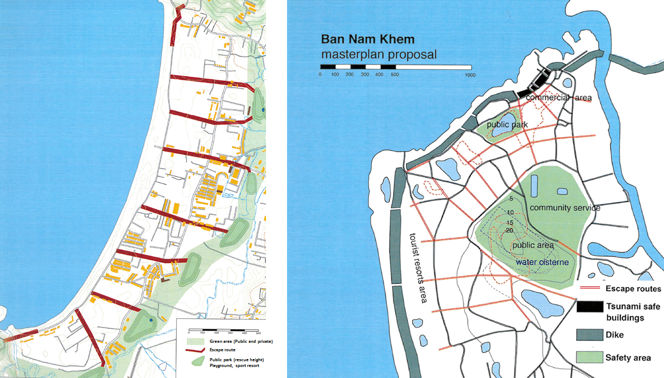- NGI /
- Projects /
- ICG - International Center for Geohazards /
- SP 13 - Prevention and mitigation
SP 13 - Prevention and mitigation
Early warning systems and the construction of physical protection barriers are specific tasks in the proposed ICG research.

Mitigation measures for risks associated with geohazards can broadly be classified into six categories:
- land use plans
- enforcement of building codes and good construction practice
- early warning systems
- construction of physical protection barriers
- network of escape routes and "safe" places
- community preparedness and awareness building.
Early warning systems and the construction of physical protection barriers have been singled out as specific tasks in the proposed ICG research. Together with the other four categories, they form the backdrop for a mitigation strategy.
The results of hazard and risk mapping and analyses will be used to formulate mitigation strategies to assist decision-making on the need and cost-benefit of hazard mitigation works. Based on such a strategy, protection measures can be developed and their cost-effectiveness and environmental soundness compared.

Figure 1. Examples of tsunami risk mitigation master plan. Left: Patong City: elevated green-belt areas approximately 400 m inland from the beach, serving as safe escape hills, and system of escape routes; car traffic to be banned from escape routes. Right: Ban Nam Khem fishing village: layout of protection dike around Ban Nam Khem with escape routes to safe high areas (Karlsrud et al. 2006).
A mitigation strategy would involve:
- identification of possible disaster-triggering scenarios, and the associated hazard level
- analysis of possible consequences for the different scenarios
- assessment of possible measures to reduce and/or eliminate the potential consequences of the danger
- recommendation of specific remedial measures and if relevant reconstruction and rehabilitation plans
- transfer of knowledge and communication with authorities and society
The strategy developed by ICG and NGI for the tsunami-affected areas of Thailand after the 26th December 2004 Indian Ocean tsunami provides a good example of what can be done.
Any mitigation strategy needs to be adapted for different natural hazards and different parts of the world. Especially for developing countries, it is vital to establish and promote proper land-use planning and construction practices to regulate human activities that increase the risk of earthquakes, landslides, or tsunamis and to prevent the settlement of communities in high-risk areas.
The research performed by ICG will be part of the strategic plans and communication programs. Ensuring that people do not live in "high-risk" zones will be included in the decision process. As for physical protection measures, an "how to" and "do's and don't's" guidelines will be prepared, as well as recommendations for "best practice".
Early warning systems
Read more about early warning systems here.
Physical protection measures
Read more about physical protection measures here.
References
- DiBiagio, E.B.D. & Kjekstad, O. 2007. Early Warning, Instrumentation and Monitoring Landslides. 2nd Regional Training Course, RECLAIM II, 29th January - 3rd February 2007.
- Karlsrud, K., Bungum, H., Harbitz, C.B., Løvholt, F., Vangelsten, B.V. & Glimsdal, S. 2006. Strategy for re-construction in Thailand following the 26 December 2004 tsunami event, in International Conference on Geotechnical Engineering for Disaster Mitigation & Rehabilitation, edited by: Chu, J., Phoon, K.K. & Yong, K. www.nat-hazards-earth-syst-sci.net/6/1/2006/ Nat. Hazards Earth Syst. Sci., 6: 1-19.